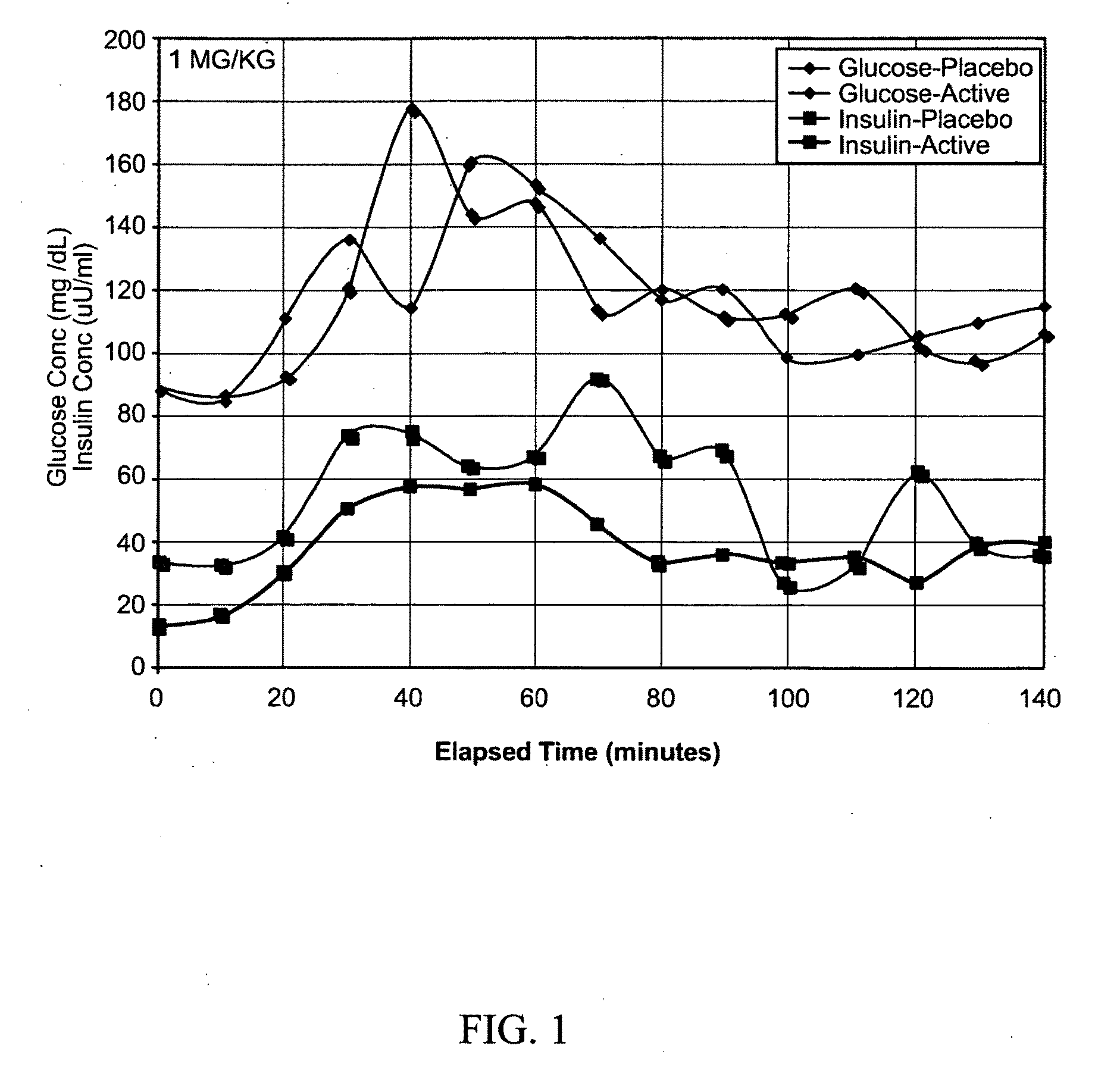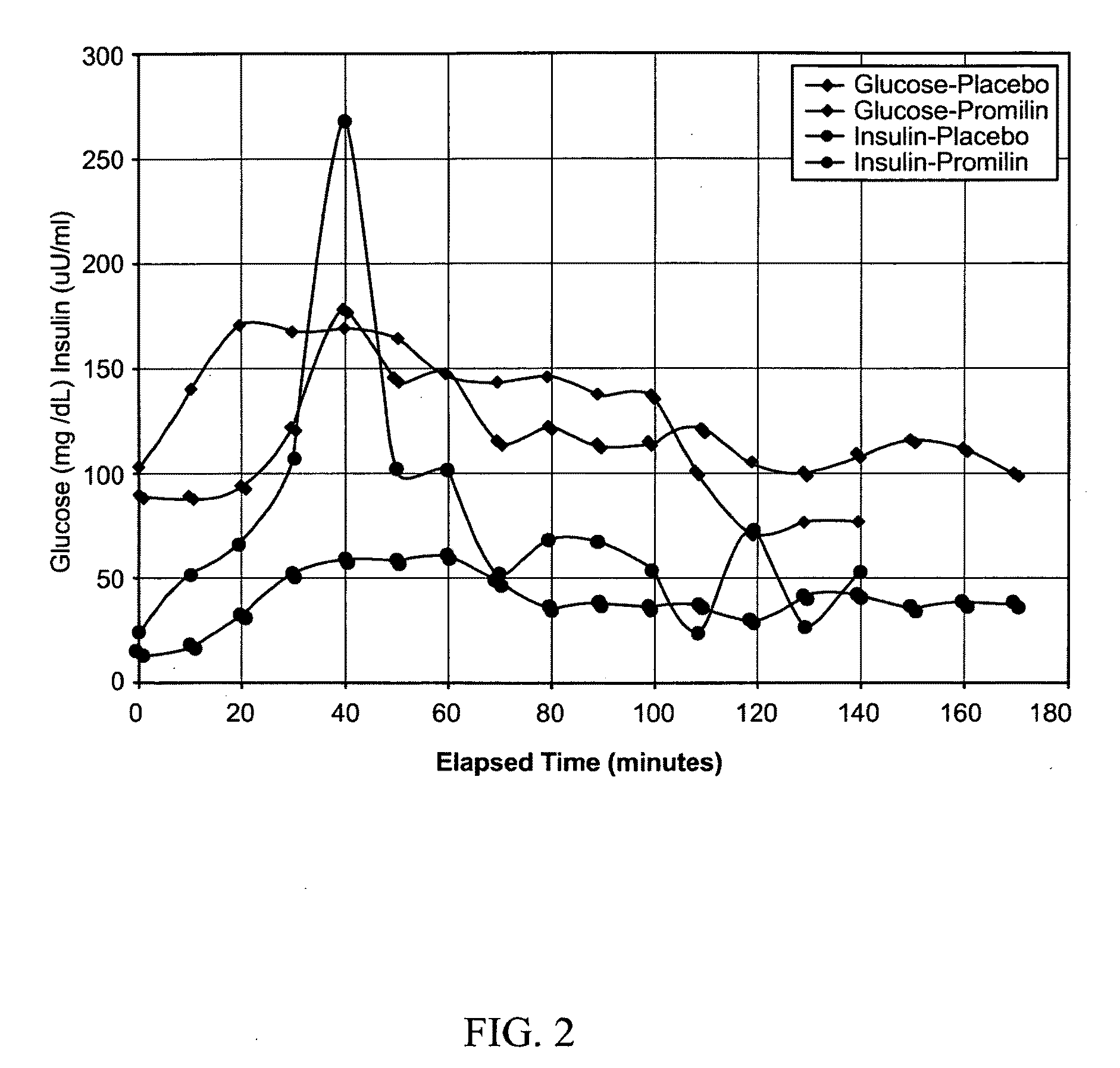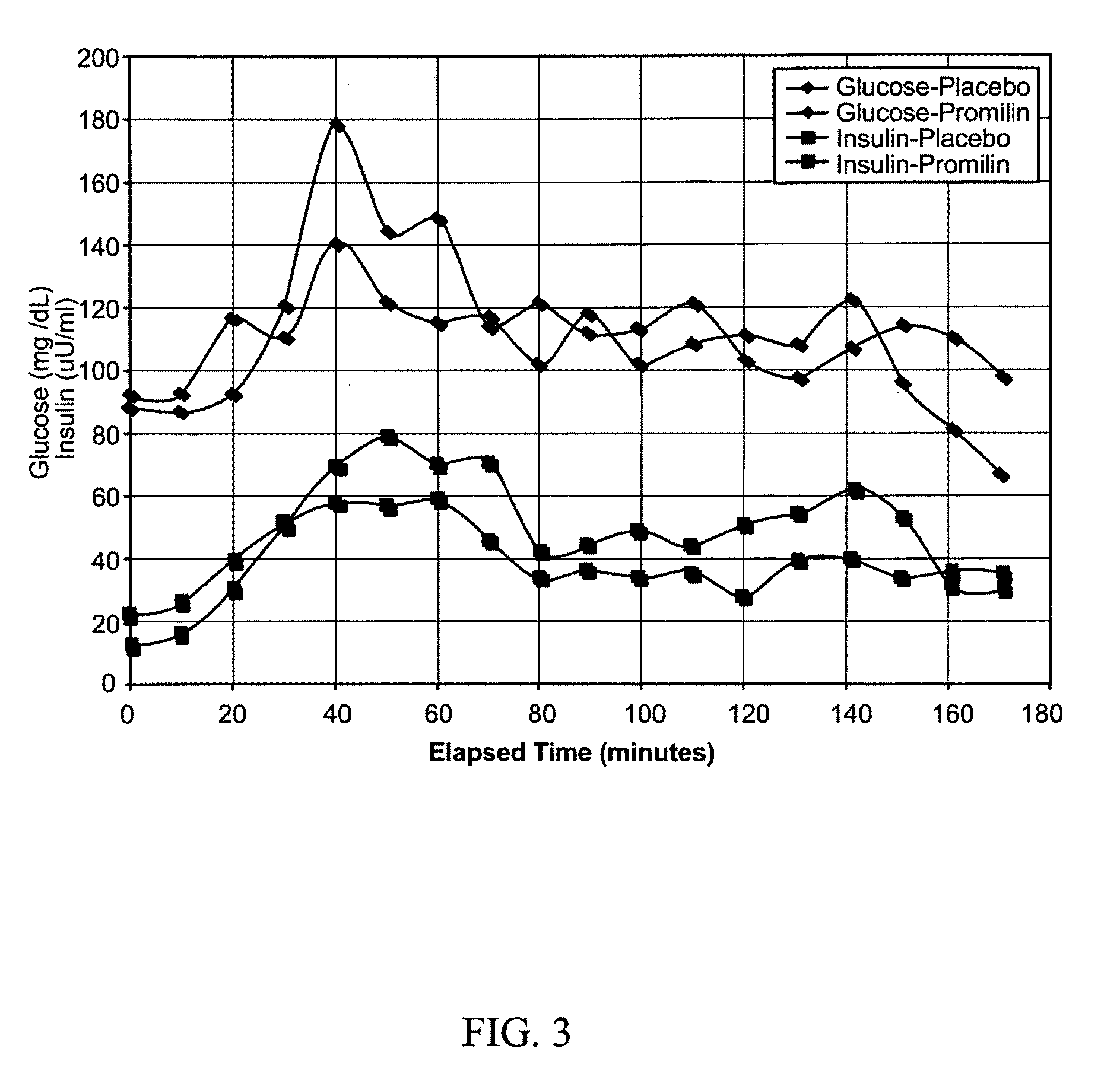Methods for improving glycemic control in humans
a glycemic control and human technology, applied in the field of methods, can solve the problems of inability to incorporate even de-fatted and de-bitterized seeds into the diet of patients or consumers, the toxicity of chloroform and general inacceptability of using fenugreek seeds as raw materials for nutritional supplements, and the inability of patients or consumers to achieve the effects of improving glycemic control, improving glycemic control, and improving glucose toleran
- Summary
- Abstract
- Description
- Claims
- Application Information
AI Technical Summary
Benefits of technology
Problems solved by technology
Method used
Image
Examples
example i
Non-Debitterized Fenugreek Seed Extract in Humans—1 mg 4-OH-Ile / kg of Body Weight
[0101]Generally referring now to FIGS. 1-10, oral glucose tolerance tests similar to those used to diagnose diabetes and gestational diabetes were conducted with three healthy male human subjects with no history of diabetes or carbohydrate metabolism dysfunction. Prior to each test, the subjects fasted overnight. At a time designated as time zero, an oral glucose challenge was administered as a solution containing 75 grams of glucose in 300 mL water. At intervals of 15, 30, 60, 120, and 180 minutes thereafter, blood samples were taken and blood glucose levels and insulin levels were determined by well-known methods for each sample (insulin content was measured using Radioimmunassay (RIA) at the School of Pharmacy at University of Montana). In addition a blood sample was drawn 30 minutes prior to administration of the glucose test solution. Two types of tests were performed with each of the three subject...
example ii
[0114]Generally referring now to FIGS. 11-15, tests were conducted with six healthy male subjects who were recreationally active, engaging in resistance or aerobic training on an average of three days a week. Subjects underwent a two day trial to evaluate the effect of PROMILIN™ on glucose metabolism. The study protocol was essentially a glucose tolerance test (GTT) of the type known in the art for use to diagnose diabetes, insulin resistance, and similar conditions. As known in the art, such studies typically involve (1) having the subject fast (abstain from food and alcohol) for from 12 to 24 hours (overnight is common), followed by (2) measuring the subject's blood glucose level at a time designated time zero, (3) administering a glucose challenge, and (4) determining blood glucose level at various intervals for several hours post-challenge. The instant study further included measuring blood insulin levels in the samples used to determine blood glucose (GTT+insulin). In addition,...
example iii
[0130]Referring generally to FIGS. 16-19, glucose tolerance tests were performed in strains of rats that were either insulin-resistant (Zucker) or diabetic (Zucker Diabetic Fatty, ZDF), which are strains selected as a models for human Type II diabetes mellitus. In experiment 1, glucose tolerance was assessed in 50 male ZDF / Gmi-fa rats, 9 weeks old, following a 16 hour fast. For oral glucose tolerances tests, the rats were divided into five groups of ten. The first group received a 60% glucose solution, 2 gm / kg body weight, by oral gavage, while the remaining four groups were given a gavage containing both glucose and one of four different dose levels of PROMILIN™, with ten animals per dose group.
[0131]PROMILIN™ was diluted in water to the appropriate dose level. Blood glucose concentrations were measured by taking blood samples from the tip of the tail, both before the gavage and at 30, 60, 90, 120, and 180 minute intervals post-gavage, using a MediSense Precision G blood glucose te...
PUM
| Property | Measurement | Unit |
|---|---|---|
| weight | aaaaa | aaaaa |
| body weight | aaaaa | aaaaa |
| body weight | aaaaa | aaaaa |
Abstract
Description
Claims
Application Information
 Login to View More
Login to View More - R&D
- Intellectual Property
- Life Sciences
- Materials
- Tech Scout
- Unparalleled Data Quality
- Higher Quality Content
- 60% Fewer Hallucinations
Browse by: Latest US Patents, China's latest patents, Technical Efficacy Thesaurus, Application Domain, Technology Topic, Popular Technical Reports.
© 2025 PatSnap. All rights reserved.Legal|Privacy policy|Modern Slavery Act Transparency Statement|Sitemap|About US| Contact US: help@patsnap.com



